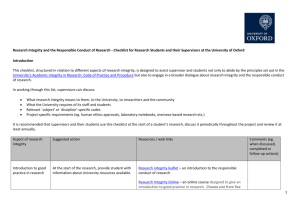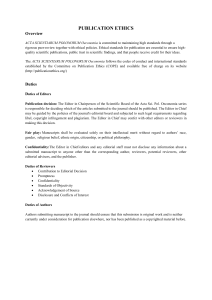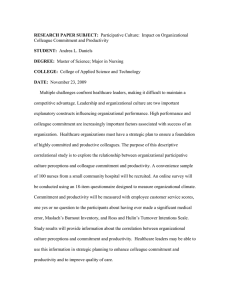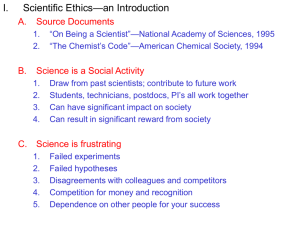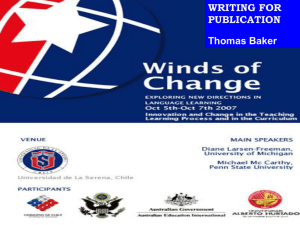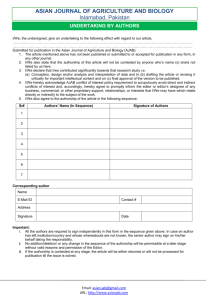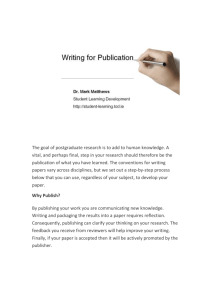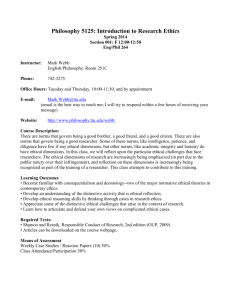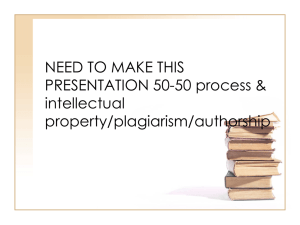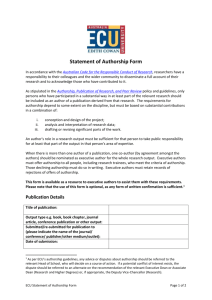How to write an article for publication
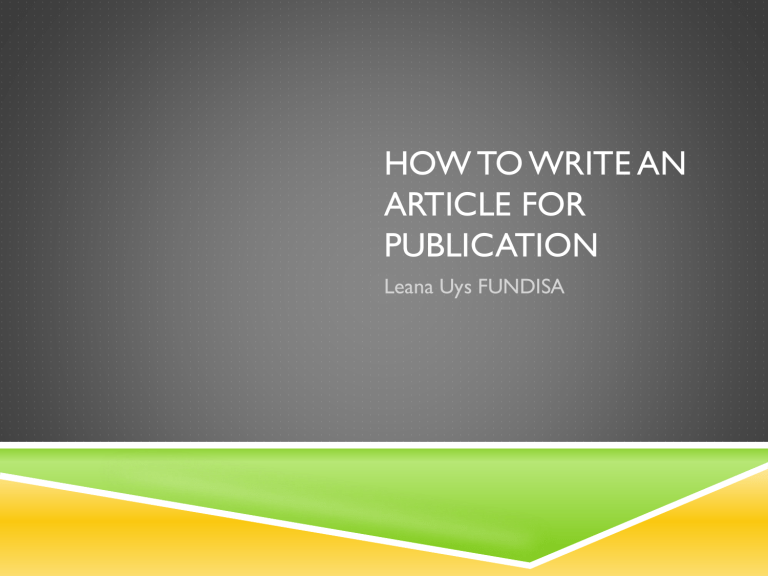
HOW TO WRITE AN
ARTICLE FOR
PUBLICATION
Leana Uys FUNDISA
STAGES
4.
5.
6.
7.
1.
2.
3.
Choose a journal and study its guidelines
Study the journal format and plan your own format
Write the article
Get a colleague to read and give feedback
Submit
Work with editors to get to publication
Celebrate!
1. CHOOSE A JOURNAL
Your topic falls within its scope
Go for the highest impact journal you think you can make:
International only if you add to international knowledge
Circulation, audience, impact factor
What is the quality of your work?
Essential: what is the word count, table count and figure count they allow?
International Nursing Review: only three tables and/or figures
2. PLAN A FORMAT
IMRAD
Introduction
Materials and methods
Results
Additions (figures, tables,)
Discussion and conclusions
Introduction
Problem statement
Background to the problem
Alternatively
Introduction
Problem statement
TWO JOURNALS
J of Nursing Scholarship
Introduction (often not as heading)
Often starts with aim
Then background
Then conceptual of theoretical framework
Look at abstract format
Purpose
Designs
Methods
Findings
Conclusions
Clinical relevance
SA Journal of Higher Education
Introduction
Purpose of article
Problem and background to problem
Literature review
Setting or context
Abstract
Main arguments
Methods
Conclusions
3. WRITE THE ARTICLE
From a doctoral study:
Identify two or three possible articles.
Start with the smaller pieces, and end with the largest
Do not think about literature surveys, unless they were systematic reviews
From a Masters study: Usually only one article, dealing with the study, not the literature
From another study:
Each phase could be an article.
HOW SHOULD YOU WRITE?
A few general rules:
You are writing for publication, so that your peers can understand what you did and possibly replication the study: - do not give too much research theory.
Give enough detail - not too much, not too little
Balance the sections, e.g. setting and methods.
WHAT ARE THE METHODS?
Design of the study: what did you do?
Sample: How did you select your respondents/sites/ etc?
Intervention: If there is one, describe carefully
Data collection instruments: How did you measure results? Provide reliability and validity data of each, as well as a format description.
Data collection process: How did you collect the data, who did it?
How were they prepared? How were respondents approached?
Data management and analysis: Little here, since you will indicate statistics used in the results.
Ethical issues: Where did you get ethical clearance, who gave permission and how did you deal with ethical challenges.?
HOW DO I DESCRIBE MY RESULTS?
Describe your sample as it actually transpired
Answer the questions you posed systematically
Present only data in tables that are too complex to write in a sentence
Display only figures that make complex data much clearer
In writing, present only the noteworthy data from tables and figures –
DO NOT:
Repeat what is in the table/figure
Discuss the results, or quote the results from other studies.
THEN THE DISCUSSION
What are the main or significant findings?
How do they compare with that of other studies?
How do you explain them?
In terms of theory?
In terms of context?
In terms of methodology?
What were the limitations of the study?
CONCLUSIONS
Use this section for recommendations for practice, education and research.
NOW THE TITLE
Accurate, concise, specific
Use key words specific for abstracting
Resist abbreviations, brand names and jargon
Examples of titles:
A study on the effect of Pitocin on the uterus
What effect does maternal analgesia in labour have on the newborn?
Successful interventions in socioeconomically high-risk adolescent pregnancies using
CNM, MC and a multidisciplinary team in an HMO.
THE ADDITIONAL BITS AND PIECES
References
Only significant, published references
Carefully follow the journal’s prescriptions – use Endnote if you can!
Check your references against an edition of the journal
Abstract
Format of the journal
MORE WIDELY READ THAN THE ARTICLE!!
Acknowledgements
Sponsors
Statistician
Field workers
AUTHORSHIP
Each authors should have participated sufficiently in the work to take public responsibility for the content.
Authorship credits should be based only on substantial constitutions to:
Concept and study design, or analysis and interpretation of data;
Drafting and revising the articles critically for important intellectual content;
Final approval of the version to be published
PUBLISHING WITH OTHERS
A supervisor should be co-author in most cases, with the student as first author;
These issues should be clarified in your supervision policy and should be available in writing;
No HOD or laboratory director’s name get on all articles published from that Department or laboratory;
Field workers, language editors and statisticians are not co-authors.
4. CRITIQUE BY A COLLEAGUE
If you have to explain and defend, change the article.
If the first colleague asks for many changes, make the changes. And then ask another one to read and provide feedback
5. SUBMIT THE ARTICLE
The editor does a quick review, and may decline the article after this, based on relevance, originality and conformity to requirements.
An author acknowledgement it sent.
The article is sent to two or more peer reviewers.
6. RESPONDING TO CRITIQUE BY
REVIEWERS OR EDITOR
Revising the paper is usually more productive than submitting to another journal;
Submit revision with a cover letter, responding to each point raised – using a table format is useful;
Keep the tone positive and courteous;
Meet specified deadlines.
CONCLUSION
Good quality can usually get published.
You might have to do more than one revision.
You might have to try more than one journal,
